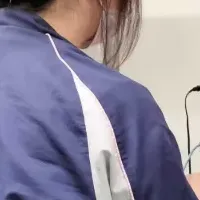
Revolutionizing Water Quality Monitoring with Innovative Technology from NUS Researchers
In a significant breakthrough, researchers from the National University of Singapore (NUS) have developed a novel sensor that promises to transform water quality monitoring. The device, known as the ReSURF sensor, is characterized by its ultrafast response time and self-healing properties, capable of detecting pollutants within mere milliseconds. Clean water is foundational to health and well-being, yet many regions struggle with contamination detection. The ReSURF sensor addresses this pressing need by providing real-time, on-site monitoring with enhanced accuracy.
The innovation behind the ReSURF sensor draws inspiration from the natural protective functions of human skin. Led by Associate Professor Benjamin Tee, the team engineered a new material that spontaneously forms a water-repellent surface. This self-healing and recyclable material, created through a unique micro-phase separation method, not only prevents contamination but also contributes to environmental sustainability.
Incorporated into a triboelectric nanogenerator (TENG), the ReSURF sensor generates electrical charges from the movement of water droplets, facilitating the monitoring of pollutants like oils and fluorinated compounds. These contaminants pose challenges for many existing water quality sensors. As highlighted by Assoc Prof Tee, the ReSURF sensor's ability to detect a range of pollutants positions it as a frontrunner in sustainable water management solutions.
Existing technologies such as electrochemical sensors and biosensors often suffer from slow response times and reliance on external power sources. The ReSURF sensor, however, stands out with its capacity to detect contaminants within approximately 6 milliseconds—much quicker than a human blink. Additionally, being stretchable and transparent, the material allows for versatile applications in various contexts, including soft robotics and wearable technology.
Furthermore, the recycling capabilities of the ReSURF sensor address environmental concerns associated with traditional sensing materials. The sensor can be recycled efficiently due to its solubility, allowing for its reuse without performance degradation—an essential attribute for sustainable technology.
To demonstrate the sensor's capabilities, researchers conducted tests using soft robotic models mimicking pufferfish, successfully detecting oil and perfluorooctanoic acid in water samples. These promising results indicate that the ReSURF sensor can facilitate early detection of potential water contaminants, crucial for prompt response measures.
The potential applications of the ReSURF sensor are vast. It can be implemented in various water bodies—rivers, lakes, and reservoirs—to monitor water quality effectively. In agriculture, it can ensure safe irrigation practices, particularly in sensitive areas such as rice paddies. Moreover, its deployment in sewage treatment plants could revolutionize wastewater management by providing real-time insights into contamination levels.
Looking ahead, the NUS research team aims to optimize the ReSURF sensor further. Future iterations may include enhanced detection specificity, wireless data transmission for seamless monitoring, and larger-scale environmental applications. Additionally, the team is committed to exploring eco-friendly materials that align with evolving regulations and sustainability goals.
Assoc Prof Tee anticipates that integrating advanced technologies, such as machine learning for signal analysis, could significantly improve pollutant detection capabilities. The ReSURF sensor, as envisioned by the research team, not only serves as a practical tool for monitoring water quality but stands to lay the groundwork for advanced, intelligent water management systems in the future.
This pioneering work highlights NUS's commitment to addressing critical global challenges and its role in shaping sustainable technologies for a better world.
The innovation behind the ReSURF sensor draws inspiration from the natural protective functions of human skin. Led by Associate Professor Benjamin Tee, the team engineered a new material that spontaneously forms a water-repellent surface. This self-healing and recyclable material, created through a unique micro-phase separation method, not only prevents contamination but also contributes to environmental sustainability.
Incorporated into a triboelectric nanogenerator (TENG), the ReSURF sensor generates electrical charges from the movement of water droplets, facilitating the monitoring of pollutants like oils and fluorinated compounds. These contaminants pose challenges for many existing water quality sensors. As highlighted by Assoc Prof Tee, the ReSURF sensor's ability to detect a range of pollutants positions it as a frontrunner in sustainable water management solutions.
Existing technologies such as electrochemical sensors and biosensors often suffer from slow response times and reliance on external power sources. The ReSURF sensor, however, stands out with its capacity to detect contaminants within approximately 6 milliseconds—much quicker than a human blink. Additionally, being stretchable and transparent, the material allows for versatile applications in various contexts, including soft robotics and wearable technology.
Furthermore, the recycling capabilities of the ReSURF sensor address environmental concerns associated with traditional sensing materials. The sensor can be recycled efficiently due to its solubility, allowing for its reuse without performance degradation—an essential attribute for sustainable technology.
To demonstrate the sensor's capabilities, researchers conducted tests using soft robotic models mimicking pufferfish, successfully detecting oil and perfluorooctanoic acid in water samples. These promising results indicate that the ReSURF sensor can facilitate early detection of potential water contaminants, crucial for prompt response measures.
The potential applications of the ReSURF sensor are vast. It can be implemented in various water bodies—rivers, lakes, and reservoirs—to monitor water quality effectively. In agriculture, it can ensure safe irrigation practices, particularly in sensitive areas such as rice paddies. Moreover, its deployment in sewage treatment plants could revolutionize wastewater management by providing real-time insights into contamination levels.
Looking ahead, the NUS research team aims to optimize the ReSURF sensor further. Future iterations may include enhanced detection specificity, wireless data transmission for seamless monitoring, and larger-scale environmental applications. Additionally, the team is committed to exploring eco-friendly materials that align with evolving regulations and sustainability goals.
Assoc Prof Tee anticipates that integrating advanced technologies, such as machine learning for signal analysis, could significantly improve pollutant detection capabilities. The ReSURF sensor, as envisioned by the research team, not only serves as a practical tool for monitoring water quality but stands to lay the groundwork for advanced, intelligent water management systems in the future.
This pioneering work highlights NUS's commitment to addressing critical global challenges and its role in shaping sustainable technologies for a better world.
Topics Consumer Technology)










【About Using Articles】
You can freely use the title and article content by linking to the page where the article is posted.
※ Images cannot be used.
【About Links】
Links are free to use.